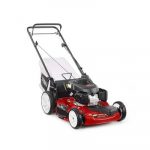Really, really enthusiastic gardeners are so excited about their hobby, some have been heard to say that gardening is “out of this world.” Of course, they mean it figuratively. However, the National Aeronautics and Space Administration (NASA) believe it literally.
A so-called cutting-edge “Space Garden” was recently delivered to the International Space Station. The Sierra Nevada Corporation’s ORBITEC team, as well as engineers associated with NASA, developed the garden, which is said to be critical to space agriculture and bioproduction research.

The “Space Garden,” actually known as the Advanced Plant Habitat offers environmental conditions to grow plants in microgravity.
(Courtesy: NASA)
Known as the Advanced Plant Habitat (APH), the Space Garden will offer the environmental conditions to grow plants in microgravity, test new technologies and conduct controlled science experiments, which are expected to be key in making agriculture and fresh food more prominent in extended space exploration. Information and technology from APH will also be used in other space biology experiments, where specific growing conditions are beneficial or required.
The new system is the next generation of biological systems and is the largest of its kind. It will help provide long-duration plant science capabilities.
The “Space Garden” is self-contained and automated, which significantly reduces the required crew time to grow plants and ideally will lead to a more reliable and fruitful crop at harvest.
It builds on previous experience with controlled microgravity environments, including the successful Biomass Production System flown in 2003 and significant advancements from the previous VEGGIE payload, which was also developed and fabricated by SNC’s ORBITEC and NASA engineers. VEGGIE provided the first fresh food to NASA astronauts on the International Space Station. The current “Space Garden” is more sophisticated because it takes away the open environment variable.
The “Space Garden” is about the size of a small kitchen oven with precise controls of the shoot and root environments. The system easily integrates into existing space station infrastructure for sustainable operations.
Here is how the “Space Garden” works.
· The APH closely controls and regulates parameters such as temperature, humidity, light levels, photoperiods, moisture provided to specimens, CO2 levels, ethylene levels and airflow.
· It uses red, blue, green and a broad spectrum of white LED lights.
· Among other plants, Arabidopsis seeds will be grown, which are small flowering plants related to cabbage and mustard. Changes to the plant are easily observed, making it a very useful model in determining how space affects its growth.
· Data gathered from 180 sensors within the “Space Garden” will be relayed back in real time to NASA’s Kennedy Space Center.
· Three cameras are included to take periodic photographs.
The system is a plug-and-play unit and includes subsystems that can easily be removed and replaced.






